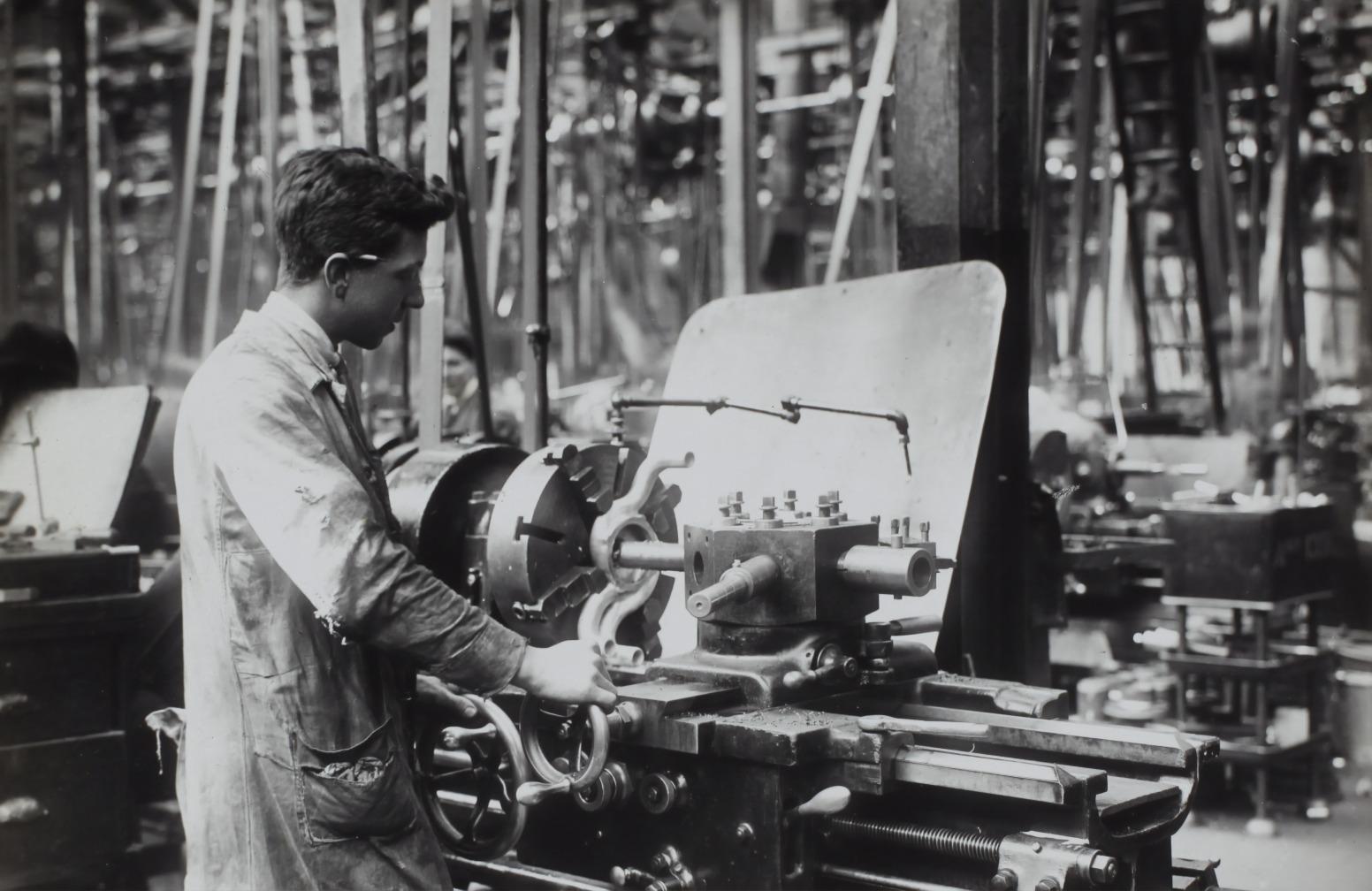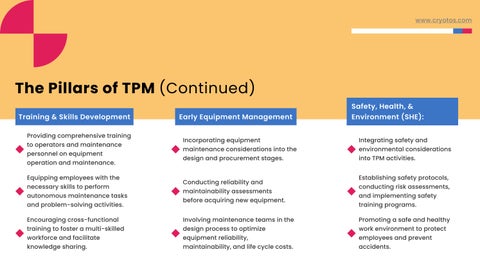
Everything You Need to Know About TPM Total Productive Maintenance: Best Rated CMMS/EAM www.cryotos.com
Introduction
TPM is a powerful management approach that has revolutionized how organizations manage their equipment and maximize operational efficiency. This presentation will delve into the key concepts, benefits, implementation strategies, and success stories related to TPM. So, let's embark on this enlightening journey and discover everything you need to know about TPM.

www.cryotos.com
Understanding Total Productive Maintenance

Definition and Origins:
TPM is a proactive maintenance strategy aiming to achieve zero breakdowns, zero defects, and zero accidents.
Developed in Japan in the 1960s by Nippon Denso, a subsidiary of Toyota, as an integral part of the Toyota Production System.
Built on the foundation of autonomous maintenance, preventive maintenance, and proactive employee involvement.
Objectives of TPM:
Eliminating unplanned equipment downtime and maximizing overall equipment effectiveness (OEE).
Reducing defects, rework, and waste through improved equipment reliability and performance.
www.cryotos.com
Fostering a culture of continuous improvement and empowering employees to take ownership of equipment maintenance.
The Pillars of TPM
Autonomous Maintenance
Planned Maintenance
Involving operators in daily equipment inspections, cleaning, and minor maintenance tasks.
Developing operator skills to detect early signs of equipment deterioration and taking preventive actions.
Empowering operators to contribute to equipment improvement and participate in problem-solving.
Implementing preventive maintenance activities based on equipment manufacturer recommendations and historical data. Conducting regular inspections, lubrication, calibration, and component replacements to prevent breakdowns. Leveraging technology such as condition monitoring and predictive maintenance to optimize maintenance schedules.
Focused Improvement
Engaging employees in small group activities (SGAs) to identify and address recurring equipment problems.
Utilizing root cause analysis and problem-solving techniques (e.g., PDCA, Six Sigma) to drive continuous improvement.
Implementing equipment modifications and process optimizations to enhance performance and reduce defects.
www.cryotos.com
The Pillars of TPM (Continued)
Training
Providing comprehensive training to operators and maintenance personnel on equipment operation and maintenance.
Equipping employees with the necessary skills to perform autonomous maintenance tasks and problem-solving activities. Encouraging cross-functional training to foster a multi-skilled workforce and facilitate knowledge sharing.
Early Equipment Management
Incorporating equipment maintenance considerations into the design and procurement stages. Conducting reliability and maintainability assessments before acquiring new equipment. Involving maintenance teams in the design process to optimize equipment reliability, maintainability, and life cycle costs.
Safety, Health, &
Environment (SHE):
Integrating safety and environmental considerations into TPM activities.
Establishing safety protocols, conducting risk assessments, and implementing safety training programs.
Promoting a safe and healthy work environment to protect employees and prevent accidents.
& Skills Development
www.cryotos.com
Benefits of TPM Implementation
Improved Equipment Reliability:
Reduced breakdowns and unplanned downtime.
Enhanced equipment performance and OEE.
Increased lifespan of equipment through proactive maintenance.
Higher Product Quality:
Decreased defects, rework, and scrap.
Consistent product quality and customer satisfaction.
Streamlined production processes and improved traceability.
Increased Employee Engagement:

Empowered operators are taking ownership of equipment maintenance.
Enhanced teamwork and collaboration through SGAs.
Skill development and career growth opportunities.
www.cryotos.com
Commitment from Top Management:
Leadership support and involvement in TPM implementation.
Setting clear goals and expectations for TPM initiatives.
Allocation of necessary resources, including training and equipment upgrades.
Effective Training and Skill Development:
Providing comprehensive training programs on TPM principles and techniques.
Ensuring employees have the necessary skills to perform TPM activities.
Encouraging continuous learning and knowledge sharing.
Engaging Employees: Communicating the purpose and benefits of TPM to all employees.
Encouraging active participation and empowerment at all levels.
Recognizing and rewarding employee contributions to TPM.
Establishing Key Performance Indicators (KPIs):
Defining and monitoring relevant metrics to measure TPM progress.
Tracking OEE, equipment downtime, defect rates, and employee engagement.
Using KPIs to identify areas for improvement and celebrate successes.
Implementing TPM Successfully
www.cryotos.com
Conclusion
Total Productive Maintenance (TPM) and Cryotos CMMS (Computerized Maintenance Management System) software form a powerful synergy that can revolutionize how organizations manage their equipment and maintenance processes.
By combining the principles of TPM with the functionalities of Cryotos CMMS software, organizations can create a robust maintenance management system that maximizes equipment uptime, optimizes maintenance strategies, enhances employee engagement, and ultimately leads to improved productivity and profitability. www.cryotos.com

Our Contact sales@cryotos.com +91 95000 40414 www.cryotos.com India | Singapore | Malaysia | Middle East | United States | Tanzania | Cyprus





